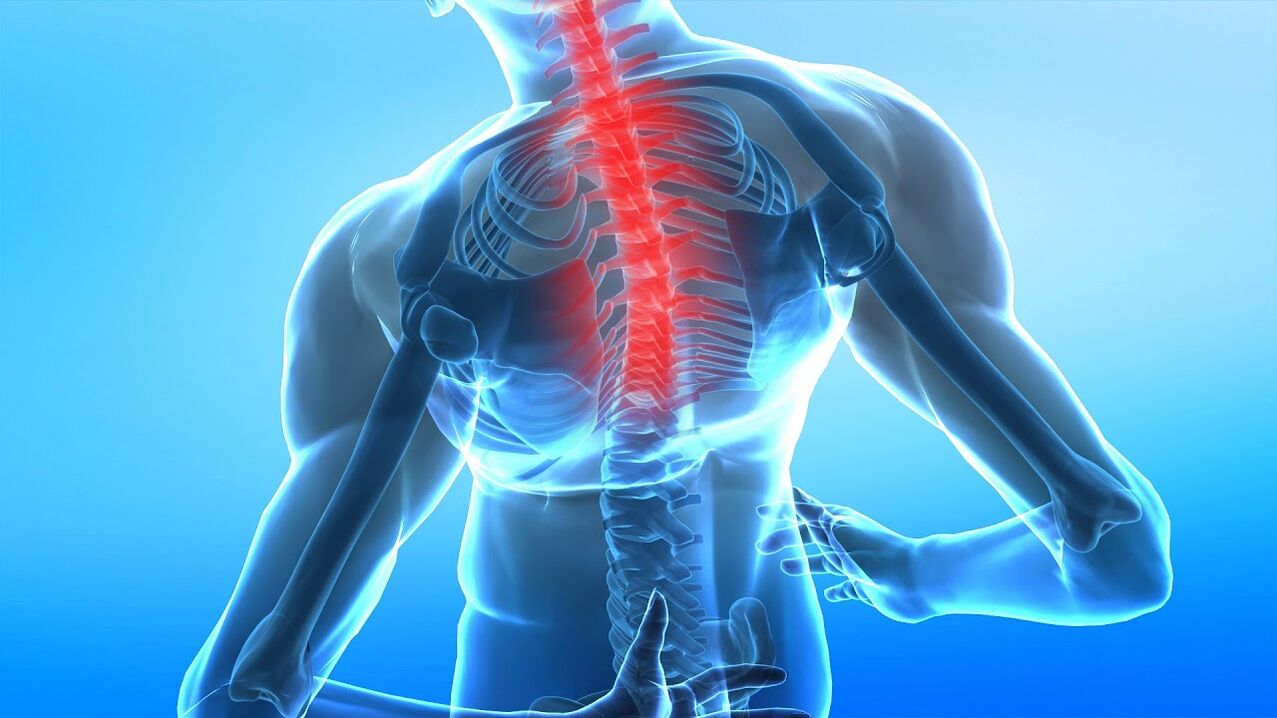Osteochondrosis of the spine is a complex disorder that affects the thoracic, lumbar, and cervical spine. Consider treating the most common symptoms and characteristics of the disease at home.

Common symptoms of spinal osteochondrosis
Spinal osteochondrosis occurs in 60-70% of people over the age of 40. Recently, it is not uncommon for young people in their 20s to 30s to suffer from osteochondrosis.
The clinical presentation is determined based on which part of the spine is affected by the disease. Failure in the neck region is characterized by the appearance of the following symptoms:
- Dizziness that occurs spontaneously and increases when turning the head (especially with sudden movements);
- Painkillers do not relieve headaches. Sports activities in the neck area often cause pain;
- shoulder and upper extremity girdle pain;
- Violation of vision: weakened, blinking before the eyes of "flies" and multi-colored circles;
- Hearing impairment: tinnitus;
- episodes of loss of consciousness;
- Snoring in a dream is the result of constant tension in the neck musculature;
- In more advanced cases, neurological symptoms occur: numbness of the tongue, changes in voice, etc.
Thoracic osteochondrosis is characterized by:
- Chest, shoulder blade pain, caused by physical activity, hypothermia. Pain most often occurs at night. Deep breathing can cause increased pain;
- Feeling of pressure in the chest and tingling between the ribs (especially when changing body positions and movements);
- There is a "crawling" feeling in the chest and arms, and sometimes the neck. Limbs are numb and cold.
The clinical symptoms of osteochondrosis located in the lumbar region are based on the following symptoms:
- The pain syndrome is confined to the lower back. It can be painful, permanent or periodic, in the form of "lumbago", with irradiation of the right or left leg as well as the perineum, sacrum. Pain increases significantly with exercise and physical activity;
- Numbness and coldness in the lower extremities, decreased sensitivity in the legs;
- Paralysis and paralysis of the legs may occur with the failure of the motor part of the neural chain;
- Urogenital organ dysfunction.
How to get rid of osteochondrosis at home without medication
For the treatment of osteochondrosis at home without the use of drugs, remedies of plant and animal origin are often used. Prioritize the following:
- bee and snake venom;
- badger fat;
- fir essential oil;
- camphor alcohol, etc.
These substances can be used as ointments, compresses, liniments.
To relieve symptoms and slow the progression of the disease, orthopaedic bedding is recommended: mattresses and pillows. In addition, special needle applicators can be used at home to improve blood circulation in tissues and relax muscles.
Proper nutrition plays an important role in the treatment of osteochondrosis. To improve the condition of cartilage and vertebrae, the diet should exclude alcohol, coffee, tea, spicy foods, foods rich in extracts (fat and fish, mushrooms);
Add foods and dishes to your diet that help restore and maintain cartilage tissue integrity: lean meats and fish, dairy products.
At home, you can also turn to a professional massage therapist who will help relieve muscle tension in any part of your spine. Be careful, you can do the massage yourself. Self-massage involves stroking, rubbing, and kneading.
How to Treat Osteochondrosis with Medications at Home
Medication for any disease, including osteochondrosis, should be prescribed by a qualified specialist. Only a doctor can prescribe the correct treatment regimen, taking into account all possible contraindications to taking one drug or another. Currently, the following groups of drugs are used to treat osteochondrosis:
- Non-steroidal anti-inflammatory drugs. They are available in powder, tablet form - for systemic use, and ointments and gels - for topical use. The former effect is more significant;
- analgesics (pain relievers);
- Muscle relaxants and antispasmodics. Removal of muscle spasms and pathological muscle tension;
- Preparations for improving microcirculation and hemorheology;
- chondroprotective agent. Provides cartilage against negative factors;
- Vitamins - mainly B group (B1, B6, B12). Positively affects metabolic processes of the nervous system;
- Antidepressants. Prevention of psychosomatic diseases.
How to Cure Osteochondrosis at Home with Exercise
For osteochondrosis of each spine, orthopaedic and rehabilitation physicians have developed specialized comprehensive treatment exercises. For exercising to be beneficial, you must follow some simple rules:
- Use specially designed complexes;
- Movement should not cause discomfort and pain;
- The movement should be smooth, precise and slow;
- You need to do these exercises regularly. Even a minimal amount of time spent during the day can provide incredible benefits to the spine.
- Exercise therapy complexes should only be administered during remission.
In addition to comprehensive therapeutic exercise, doctors strongly recommend that you stay physically active at all times. Swimming and water aerobics that everyone can do at any time of the year to release the back muscles perfectly.
Note: Any treatment for osteochondrosis must be agreed with the attending physician. Only in this case can you count on the maximum effect of the treatment.























